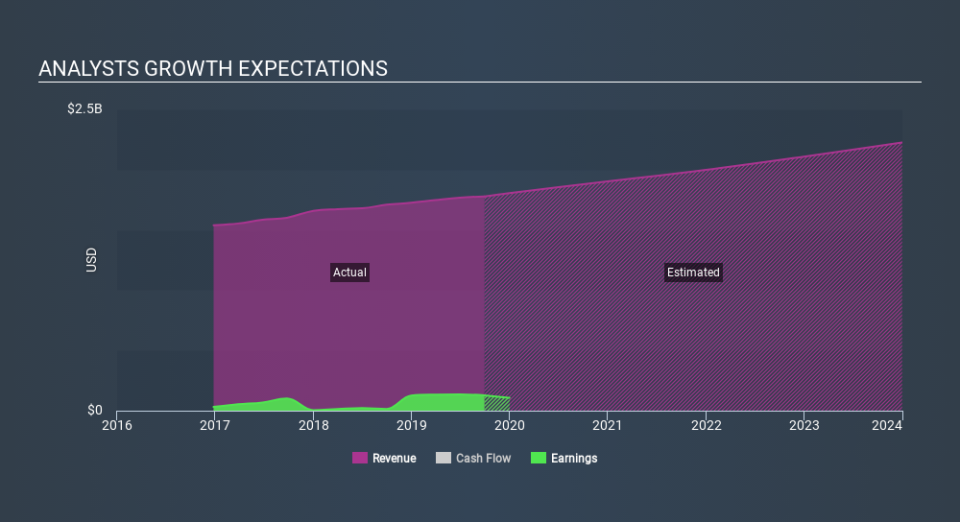At US$31.84, Is It Time To Put The New York Times Company (NYSE:NYT) On Your Watch List?

The New York Times Company (NYSE:NYT), which is in the media business, and is based in United States, saw a double-digit share price rise of over 10% in the past couple of months on the NYSE. With many analysts covering the mid-cap stock, we may expect any price-sensitive announcements have already been factored into the stock’s share price. However, could the stock still be trading at a relatively cheap price? Today I will analyse the most recent data on New York Times’s outlook and valuation to see if the opportunity still exists.
See our latest analysis for New York Times
What's the opportunity in New York Times?
New York Times is currently overpriced based on my relative valuation model. I’ve used the price-to-earnings ratio in this instance because there’s not enough visibility to forecast its cash flows. The stock’s ratio of 41.58x is currently well-above the industry average of 14.6x, meaning that it is trading at a more expensive price relative to its peers. If you like the stock, you may want to keep an eye out for a potential price decline in the future. Given that New York Times’s share is fairly volatile (i.e. its price movements are magnified relative to the rest of the market) this could mean the price can sink lower, giving us another chance to buy in the future. This is based on its high beta, which is a good indicator for share price volatility.
Can we expect growth from New York Times?
Investors looking for growth in their portfolio may want to consider the prospects of a company before buying its shares. Although value investors would argue that it’s the intrinsic value relative to the price that matter the most, a more compelling investment thesis would be high growth potential at a cheap price. New York Times’s revenue growth are expected to be in the teens in the upcoming years, indicating a solid future ahead. Unless expenses grow at the same level, or higher, this top-line growth should lead to robust cash flows, feeding into a higher share value.
What this means for you:
Are you a shareholder? It seems like the market has well and truly priced in NYT’s positive outlook, with shares trading above its fair value. At this current price, shareholders may be asking a different question – should I sell? If you believe NYT should trade below its current price, selling high and buying it back up again when its price falls towards its real value can be profitable. But before you make this decision, take a look at whether its fundamentals have changed.
Are you a potential investor? If you’ve been keeping an eye on NYT for a while, now may not be the best time to enter into the stock. The price has surpassed its industry peers, which means it is likely that there is no more upside from mispricing. However, the positive outlook is encouraging for NYT, which means it’s worth diving deeper into other factors in order to take advantage of the next price drop.
Price is just the tip of the iceberg. Dig deeper into what truly matters – the fundamentals – before you make a decision on New York Times. You can find everything you need to know about New York Times in the latest infographic research report. If you are no longer interested in New York Times, you can use our free platform to see my list of over 50 other stocks with a high growth potential.
If you spot an error that warrants correction, please contact the editor at editorial-team@simplywallst.com. This article by Simply Wall St is general in nature. It does not constitute a recommendation to buy or sell any stock, and does not take account of your objectives, or your financial situation. Simply Wall St has no position in the stocks mentioned.
We aim to bring you long-term focused research analysis driven by fundamental data. Note that our analysis may not factor in the latest price-sensitive company announcements or qualitative material. Thank you for reading.


